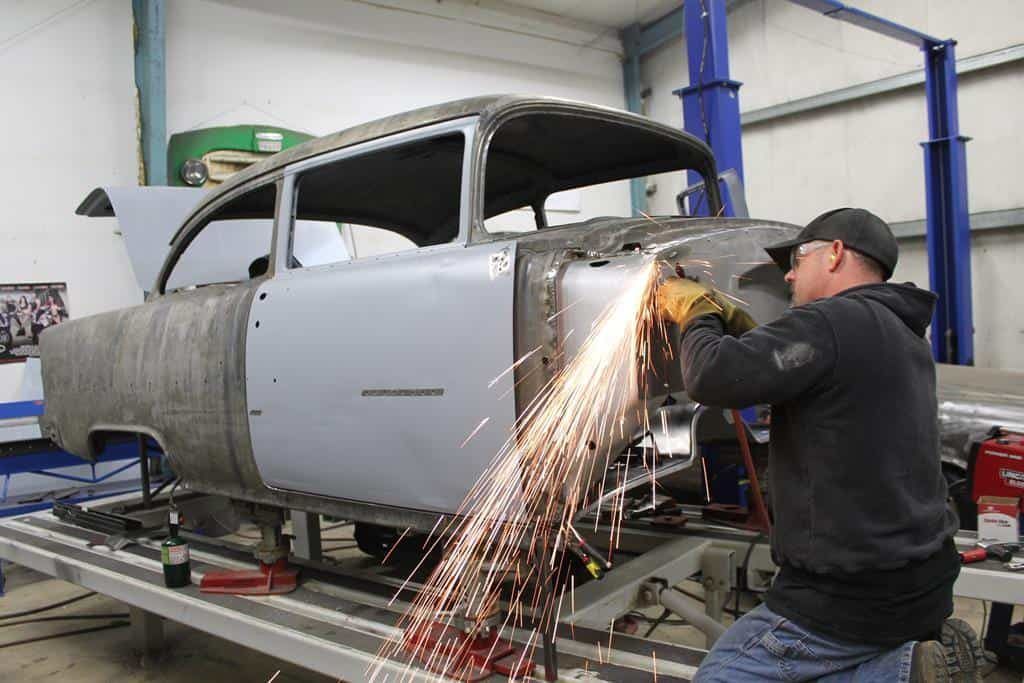 Hunting down and purchasing the collector car of your dreams can be an amazing experience. However, before you can enjoy all the glory of your new wheels, there is often a period beforehand of customization, restoration, or updating and modernizing. Of course, this varies depending on the condition of the vehicle at the time of purchase. We all know that car, motorcycle and RV enthusiasts are up for any job, and the scarcity, rarity and desire for a specific vehicle can motivate any restoration project. Whether you plan to put in the hours at a do-it-yourself pace or have a professional shop complete the entire project, it is important to understand the potential dangers that can hide under the hoods of automobiles from decades past.
Hunting down and purchasing the collector car of your dreams can be an amazing experience. However, before you can enjoy all the glory of your new wheels, there is often a period beforehand of customization, restoration, or updating and modernizing. Of course, this varies depending on the condition of the vehicle at the time of purchase. We all know that car, motorcycle and RV enthusiasts are up for any job, and the scarcity, rarity and desire for a specific vehicle can motivate any restoration project. Whether you plan to put in the hours at a do-it-yourself pace or have a professional shop complete the entire project, it is important to understand the potential dangers that can hide under the hoods of automobiles from decades past.
Relaxed standards and few regulations throughout the industrialization of the automotive industry (1920-1970) have introduced us to some unique vehicles from the past. However, with lesser regulations comes greater risks. Dangerous or outdated components which were once popular to use across a variety of parts and from a plethora of suppliers still present a health risk to drivers, passengers and mechanics today. Classic cars have been proven to contain higher levels of harmful toxins including asbestos, lead, and aged fluids. It remains nearly impossible to pinpoint specific manufactures that sourced the supplies that are now known to contain these carcinogens. During this time, toxins and their potential impacts on the health of communities was not a major concern.
Below is an overview of what to look out for when restoring, repairing, or maintaining your vehicle. Learning what to look out for can greatly limit your risk of being exposed to harm while enjoying your hobby.
One of the most dangerous materials that is found inside antique vehicles is asbestos. Asbestos is most commonly found under the hood of classic, vintage or collector vehicles. Asbestos is known for its insulation of high heat and its electrical resistance capabilities. Asbestos was once a common additive in car parts that experienced high levels of friction. Today we still find trace amounts of asbestos across a variety of automotive clutches, gaskets, hood-liners, and brakes. When asbestos containing materials are disturbed, fractured or broken, asbestos dust from the wear down of these parts will collect inside the brake housing or clutch compartment. When someone tinkers with or repairs these components, they are susceptible to breathing in these microscopic particles. When asbestos particles are inhaled, they can become lodged inside vital organs in the chest cavity, most commonly being the lungs. Asbestos is the only known cause of mesothelioma, an uncommon but completely preventable cancer with a historically poor prognosis.
Phenol is a toxin found in the fluids used in engines, transmissions and other car parts. If skin is exposed to phenol, burns can occur. Inhaling phenol vapors can cause internal burning along the inside of the nose, throat and lungs. In rare cases in which the brain is exposed to phenol vapors, seizures and comas can present.
Lead is another toxic material that is commonly found in classic cars. Lead chromate was frequently used in white, yellow, red and orange paints. Exposure to lead can damage the body’s organs, tissues, and most commonly the nervous system. In addition to lead, cadmium is another toxin found in vintage automotive paint. Cadmium can be fatal when it is sanded down and dust particles are inhaled.
More than 275 different chemicals are used in the interiors of cars. Brominated flame retardants (BFRs) are added to plastics to make them less flammable, these chemicals are colloquially known as bromine, which is one of the most common toxins found in cars today. Bromine can be found in seat belts, car seats and even plastic dashboard pieces. Decaying and flaking components can lead to the mistake of breathing in bromine. This exposure can lead to reproductive issues, memory loss and other harmful health complications.
Your toys and hobbies are only as fun as they are safe. While completing any work on classic cars, always take all necessary steps to protect your health. The environmental protection agency (EPA) has published insightful information geared towards safety precautions while completing automobile refinishing and restoration projects. Occupational Safety and Health Administration (OSHA) of the United. States Department of Labor has published best practices for managing automotive asbestos dust to further inform and protect those impacted by this line of work.


You must be logged in to post a comment.